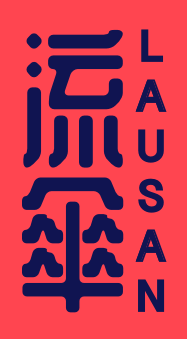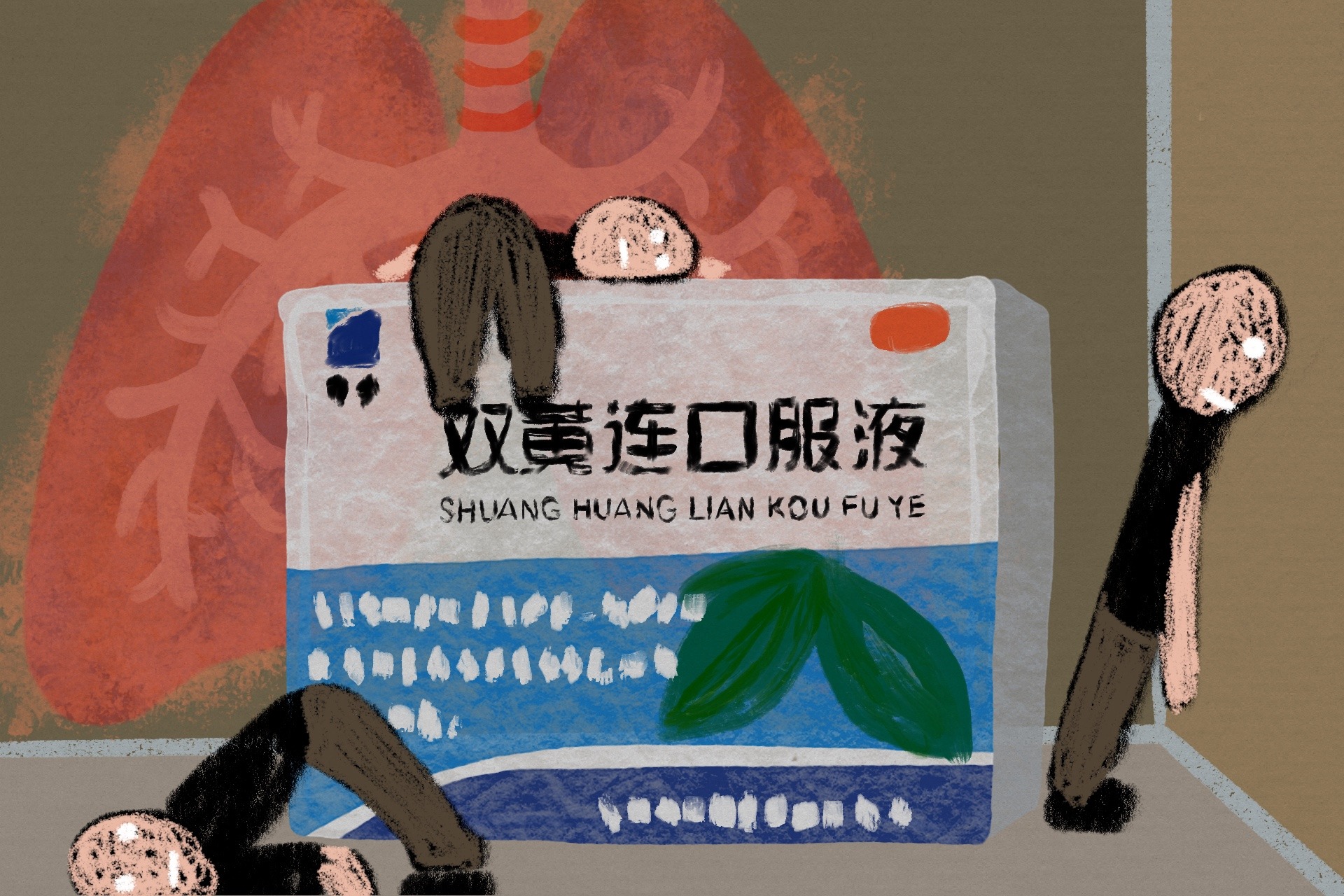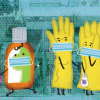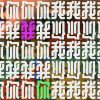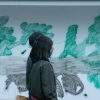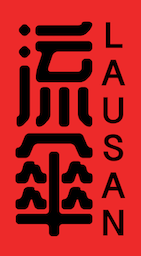Original: 【疫情時刻的自組織:民眾如何重塑社會(一)】, published in Matters
Translators: LS, Michael, Elliott, JP, LWH, KH, ZL
This is Part 1 of a three-part series. This translation has been edited for clarity and structure. Some of the original links are no longer available. If you would like to be involved in our translation work, please get in touch here.
Editor’s note: The process of translating this series from Chinese into English has involved, as with all of Lausan’s translation efforts, dialogic discussions on the most appropriate terminology to describe social phenomena across different contexts. One of the key terms in this series of articles is “自組織,” which we have translated as “mutual aid,” but may also be translated literally as “self-organization.” Mutual aid, as a concept developed by anarcho-communist Peter Kropotkin, has traditionally referred to reciprocal forms of cooperation that benefit everyone involved rather than charitable, one-way giving only in times of great need. While mutual aid as a term is now entering the mainstream, it is important to reassert that it is meant to be a durable social relation that runs counter to the individualism of capitalist charity. Taking Dean Spade’s definition of mutual aid as “collective coordination to meet each other’s needs, usually from an awareness that the systems we have in place are not going to meet them” (Mutual Aid, 2020: 7), we believe that the term “mutual aid” is appropriate to describe the organizing efforts and activities described in these articles. While recognizing that experiences of, and thus terminologies for, different social phenomena cannot necessarily be translated word-for-word across contexts, we believe that the work of translation includes analyzing the resonances between forms of political practice and communicating those in a way that is legible and productive toward mutual understanding. We are invested in putting different sites of political solidarity in conversation, and thus have chosen to translate the term “自組織” as mutual aid, in order to facilitate a conversation between Chinese organizers and those engaged in mutual aid efforts around the world in response to the COVID-19 pandemic and its exacerbation of existing material inequalities and oppressive conditions.
The year 2020 is poised to be an unforgettable one. At the beginning of the year, China underwent a public health crisis as severe as the SARS pandemic of 2003. The unexpected malfunction of state power during the pandemic further incited surges of public anxiety, disenchantment, and anger.
Faced with such a predicament, many people didn’t know what to do apart from follow public health guidelines: they wore masks, stayed indoors, and shielded themselves from the perils of the world. In this article, we focus on a group of people who acted against the current—who organized themselves into mutual aid networks and played crucial roles in circulating information and supplies during the pandemic. With the help of the Internet, these people rapidly rallied behind common causes without establishing a hierarchical bureaucratic structure confined to any specific locale. Responding to changing social demands, these groups jumped from project to project, with no expectations of monetary or reputational gain. These individual efforts penetrated the barriers imposed by the pandemic and the political system, reaching the most neglected corners of society. In contrast to institutional inertia, these bottom-up mutual aid networks were characterized by efficiency, care, and flexibility.
We cannot emphasize how unprecedented this mutual aid movement was. In recent years, the social space for organizing in China has shrunk in size and scope. An article published on the Beijing Cultural Review points out that it has always been the case that “many NGOs realize… [that] the government is an indispensable partner. To shun the support of the local government is to leave NGOs with almost no room to maneuver… In China, the practical reality is that NGOs are highly dependent on the government and capital. NGOs cannot survive without the support of the state and corporations.” Similarly, “annual donations from individuals are negligible compared to funding from corporations and other entities. Since corporate involvement in nonprofit projects became trendy, business values and commercial logic have permeated the nonprofit sector. Capital not only controls the allocation of public funds, but also demands nonprofit actors imitate corporate behaviors and values.”
Of course, existing civil society organizations contributed some insights and resources to these new initiatives. However, the majority of participants in these newly formed mutual aid groups had no prior experience in community organizing. It was the urgency of the crisis and the failure of the government that pushed them to gather together and engage in practices of mutual aid.
Therefore, we believe that it is necessary to distinguish between the volunteer mutual aid networks that emerged during the crisis, and pre-existing, legally-recognized organizations, including general companies, NGOs, and GONGOs (government-organized non-governmental organizations) that are an extension of the state apparatus. Some analyses situate these mutual aid groups within the traditional framework of “civil society,” existing in the middle space between the state, the individual, and the family. These organizations, so it is understood, are a product of the transfer of power from the ruling party to middle-range elites, i.e. technical experts, intellectuals.
Yet the mutual aid groups that this article will discuss will not live up to this label, given their transient quality and lack of formal structure. Despite these groups’ weaknesses and unsustainable nature, however, they exceeded the traditional roles of civil society in a context of widespread government and market failure. For this reason, these mutual aid groups cannot be understood within traditional concepts of “civil society.”
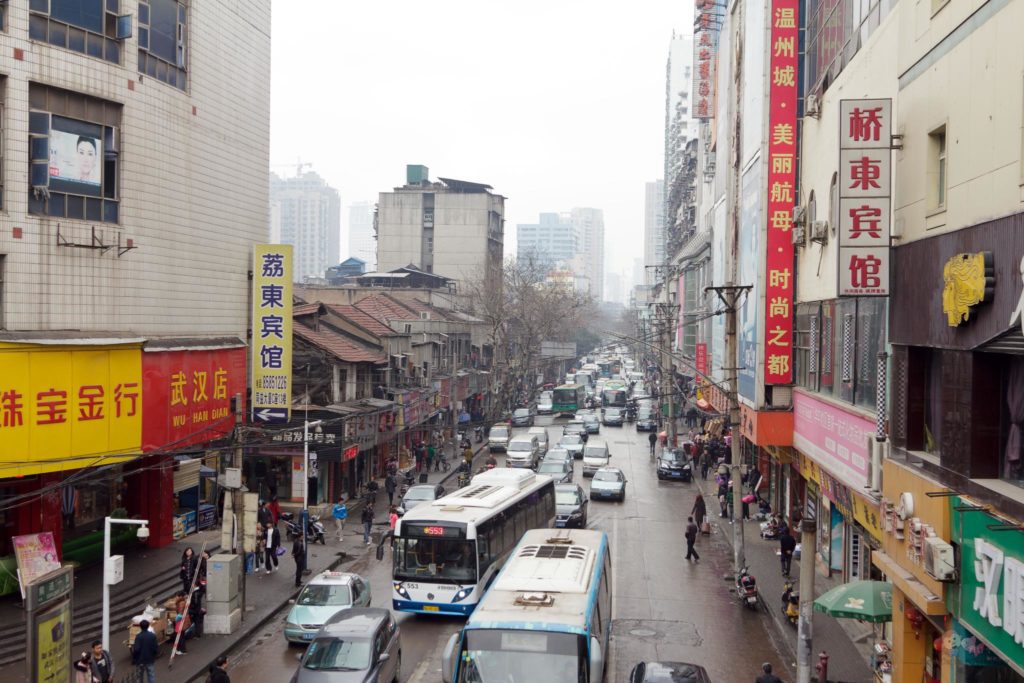
Drawing on a wide range of reports and public commentaries, this article will discuss the background and the effects of the emergence of these mutual aid groups. We will analyze the public discourse surrounding these groups, and underlying political stances from different sides. We will elucidate the different kinds of expectations people have for their society, as well as reveal the demands that remain hidden beyond public view. Finally, we will attempt to articulate these buried demands and demonstrate how they are manifesting in people’s lived experiences.
It is important to note that, as a result of the pandemic, the authors of this article had to rely on secondary news coverage of these mutual aid groups, rather than engaging in in-depth, first-hand research. This is one of the unavoidable limitations of this article. Fortunately, some of the authors of this article participated as volunteers in mutual aid projects of their own, and so were able to provide some of their own reflections to the article. If we are able, at the very least, to consolidate the information that exists and provide readers with a starting point and an extensive checklist for learning more about these mutual aid groups, then all our work will have been worth it. In the third part of this article, we have included numerous case studies of alternative forms of social organization, alongside our own theoretical analysis, to further extend this study on mutual aid groups. We hope it will serve as a form of inspiration.
Mutual aid in a time of emergency: Blood clots after an arterial rupture
The local government of Hubei Province, the epicenter of the pandemic, has borne the brunt of public censure. On 31 December 2019, the Wuhan Municipal Health Commission issued the first public notice regarding the novel coronavirus. But it was not until 22 January 2020 that the government of Hubei Province issued a request for urgent help from the rest of the country. Prior to this, officials did not take any proactive measures to combat the spread, insisting that the virus was “preventable and controllable.” On 19 January, the Baibuting neighborhood of Wuhan hosted a banquet with tens of thousands of participants; on 21 January, Wuhan’s Hongshan Hall held its annual New Year’s Feast.
That these large-scale communal events were allowed to take place during the early stages of the coronavirus outbreak, shows the severe dereliction of duty on the part of public officials. This fomented widespread public doubt regarding the government’s claims about the virus. During a press conference on 26 January, a high-ranking official wore his face mask incorrectly, stumbled multiple times over mask production statistics, and misspoke about whether there was a shortage of medical supplies.
The fast and the slow
However, it would be wrong to pin all the blame on local government. According to scholar Zhang Wenwen’s article, the local Hubei government’s failure to adequately undertake virus prevention measures, rooted in endemic conservatism and lethargy, is actually a reflection of the behavioral logic of “weak local governments” within the Chinese state system: “Weak local governments such as that of Hubei Province exist in a top-down structure of authority. Accustomed to taking orders from the central apparatus, it is precisely because of this habitus that the local Hubei government was unable to respond to the coronavirus in a timely manner.” Such a logic manifests not only between the central command in Beijing and local governments, but within any hierarchical bureaucracy. As “weak local governments,” subordinate units have no choice but to “passively wait for the top leaders to give unified orders.”
Of course, this perspective overlooks the fact that local governments had an incentive to hide the truth about the virus in order to shirk their responsibilities. But it is a reminder of a crucial aspect of the problem: in such a top-down, centrally-organized system, power of the state reigns supreme. This has always been portrayed as the most effective style of governance, especially in moments of crisis where it has been important to “focus our collective efforts to execute important tasks.”
But when power is exercised without public scrutiny and opportunities for participation, when there is insufficient communication, and when labyrinthine power structures create a situation where officials continually pass the buck and deceive one another for political gain, there emerges a recipe for chaos. If we posit that politicians are skilled at engaging in political theatrics for the purpose of earning voters’ blind approval under electoral democracy, the same can be said of sycophantic local governments and committee officials under the system of “responsibility to one’s superior.”
It was the urgency of the crisis and the lack of governmental support that pushed volunteers to gather together and engage in practices of mutual aid.
Perhaps the most classic example of such a performance would be that of the multi-billion dollar “National Public Health Emergency Reporting System,” also known as the “Reporting System.” As reported by the Financial Times, Gao Fu, the director of the Center for Disease Control, gave the following remarks at the 2019 Boao Forum for Asia’s Global Health Forum: “China has a very robust reporting system. Upon any potential outbreak, including of new or recurring diseases, the National Health Commission will be informed within six hours. This is because we have created a comprehensive and direct reporting system.”
However, 28 days after the novel coronavirus was first discovered, the Reporting System remained in a state of disuse. Officials went back on their word regarding the System’s functions: “Before new diseases can be reported within the system, they must first pass through the Center for Disease Control and Prevention (CDC), and be assessed by experts within the National Health Commission. Only after the disease has been verified will lower-level medical institutions be able to report cases on the system.” Evidently, the process of reporting remains constrained by a strict hierarchical bureaucracy. When we consider the many layers of concealment and deceit within the bureaucratic structure, it becomes obvious why central state officials were unable to gain a realistic understanding of the spread of the virus, which delayed the speed of their overall response.
Another element of the bureaucratic system is what scholar Zhou Xueguang has called “administrative subcontracting.” Through administrative subcontracting, “officials from different levels of the central government pass on local government responsibilities (security, employment, economic development, public services, etc.) to the next layer down the bureaucratic chain. The task of appointing, screening, and managing these lower-level officials is taken up by their immediate (or second-level) superiors.” Zhou argues that this system is designed to iron out the operational kinks between the central government’s authority and local governments’ effective rule. The idea is that while ultimate authority and resources belong to the central government, conferring managerial power to local governments increases general efficiency. Because of the aforementioned lack of public accountability for these authority structures and the disjuncture that exists between the reality on the ground and what is communicated upwards within the hierarchy, however, administrative subcontracting actually contributed to the state’s failure to respond to the virus.
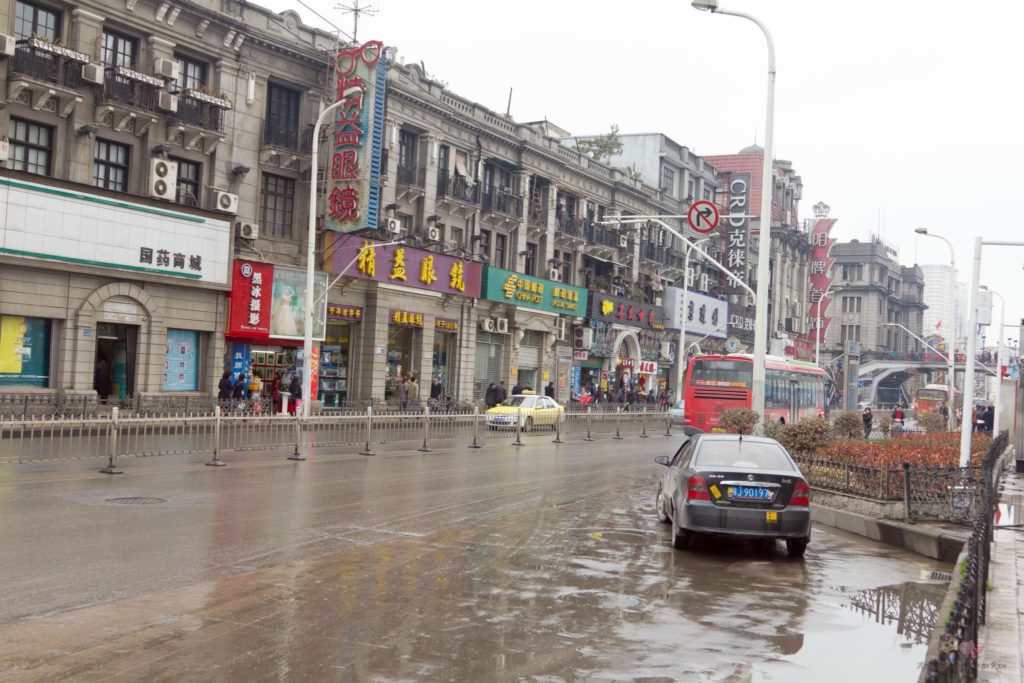
The 2003 SARS epidemic had left behind a relatively comprehensive and well-designed epidemic response system in China. And yet many provinces’ emergency supply stockpiles were insufficient to meet public demand. They were also ineffectively managed. According to the requirements of the emergency response plan, disease prevention measures, including costs related to equipment and facilities, must be listed in local governments’ fiscal plans. However, many disease prevention organizations are lacking in financial resources. Even in Shenzhen, which is often portrayed as a “strong local government”, some organizations do not have sufficient stockpiled resources.
Why did local governments’ pandemic response systems fall short? The problem may be that pandemic response has always been low on the priority list for this bureaucratic state. The work of disease prevention and preparing for emergency situations is not the focus of the system. Like other infrastructural works, public health projects do not bring in any cash to local reserves, nor are they the kinds of achievements that local officials can leverage for a promotion. This is precisely why so many grassroots hospitals lacked medical resources during the outbreak of the pandemic.
A hospital employee who had participated in fundraising activities stated, “We have chosen to fundraise for resources, rather than go through regular procurement procedures, because procurement at the hospital is rather complicated and difficult to complete in a short time. Fundraising is much more direct.” Here, we get a glimpse of one frontline doctor’s view of the benefit of mutual aid groups: in a situation where the original resource allocation system has gone haywire and where the procurement system cannot adequately respond to an unfolding emergency, mutual aid groups can get into direct contact with hospitals, find out what their needs are, and provide point-to-point donations. Indeed, we quickly saw a proliferation of these fundraising groups on Weibo, WeChat Moments, among alumni organizations, and even fan clubs.
When power is exercised without public scrutiny and opportunities for participation, when there is insufficient communication, and when labyrinthine power structures create a situation where officials continually pass the buck and deceive one another for political gain, there emerges a recipe for chaos.
It is difficult for the government’s one-size-fits-all system to accommodate the minute needs of different sectors of society. And because of its inability to adapt and respond to new information, the state’s policies can actually conflict with the needs of its citizens. One of the biggest difficulties in restarting mask production was the congestion in the flow of goods, created by the traffic controls implemented by the local government. The sudden lockdown on Wuhan, though effective in preventing asymptomatic cases from spreading from Wuhan to other areas, also prevented the normal functioning of pre-existing resource allocation models.
With the local government lacking the capacity to respond effectively and pre-existing collaborative networks thrown into disarray, there emerged significant problems with frontline workers’ transportation and room and board arrangements, which led to a rapid depletion of medical resources. Under these circumstances, a team of volunteers from Wuhan took up the task of reviving the paralyzed transportation system. The user Mediafox reported on the private car service operated by these mutual aid groups: they took turns driving medical professionals to their workplaces and transporting medical supplies, covering the costs of gas, disinfectant, and face masks out of their own pocket. Over 4,000 volunteers participated in these transport teams, risking their lives in the process. Even though volunteers were given regular health check-ups, and though the cars were properly disinfected and kitted out with virus prevention equipment, a few people unfortunately contracted COVID-19 and passed away.
Throughout the pandemic, these mutual aid groups demonstrated impressive information collection, processing, and communication skills. Not only did they continually provide the public with information regarding essential supplies and demands, they also created platforms for sharing real-time updates and debunking rumors. For example, A2N Volunteer Organization, launched on 22 January, was formed under the twin aims of “promoting scientific literacy and refuting rumors.” Later, as the team of volunteers grew, their mandate expanded to include collating data about the pandemic, mapping the spread of the virus, writing and editing popular science articles, debunking rumors, verifying hospitals and suppliers, and providing information about how to donate resources.
In a situation where the original resource allocation system has gone haywire and where the procurement system cannot adequately respond to the unfolding emergency, mutual aid groups can get into direct contact with hospitals, find out their needs, and provide point-to-point donations.
Some of these mutual aid groups even engaged in social research in order to advance public consciousness. For example, through publishing articles and posters on social media channels, the Delay Going Back to Work, Control the Pandemic group was able to establish a wide member base, inspire large amounts of discussion, and push for the establishment of certain policies. Mask distribution groups in various cities mobilized volunteers to learn about people’s views on the state’s responses to the pandemic, including those of local sanitation workers. In response to the state’s tendency to dismiss citizen-produced journalism as “rumor” (resulting in their swift deletion from the Internet), some of these mutual aid groups took it upon themselves to back up posts that might be deleted. For instance, the Anti404 group compiled all of its pandemic-related posts from 25 January to 2 February, using screenshots in the struggle against forgetting.
As a result of endless delays and contradictions in their dissemination of information about the pandemic, public officials have lost all credibility. The state’s long-term monopoly over the circulation of information means that it has lost the ability to engage with public opinion. Under these circumstances, the government will surely be expected to take responsibility for its omissions or mistakes, which have resulted in a vicious cycle of misinformation and distrust.
By contrast, mutual aid groups have been conveying information in a much more dialogic way. Conflicting and contradictory messages abound by nature. In an online environment full of different information, however, the existence of different voices allows for mutual oversight, verification, and support. We have even seen the “miraculous” work done by mutual aid groups in debunking rumors originating from the government—but shouldn’t this have been happening all along?
The neglected margins
Under a system of centralized distribution, the government allocated the majority of available resources to the capital of the province, Wuhan. In doing so, it ignored the serious impact of the pandemic on Wuhan’s neighboring cities and rural areas. The organization SEED for Social Innovation noted in regard to officials’ resource provision: “The priority of the Chinese administration is to provide for areas of central political significance, and then to slowly extend outwards from there. This fixed, hierarchical form of distribution is completely inappropriate in the face of a pandemic.” In reality, the endemic, uneven distribution of resources between different regions is an issue that would be difficult to resolve quickly even in the face of the outbreak.
People from Huanggang city had attempted to cross the Yangtze river to seek medical treatment in Wuhan, due to a lack of sufficient resources locally. None of Huanggang city’s three hospitals was adequately equipped: two of them are small district hospitals and care homes, and the third is a previously abandoned infectious diseases hospital. This is not even to mention the limited resources provided to different counties. Many of Wuhan’s neighboring cities, such as Huanggang, exist in the shadows, leading many local residents to engage in mutual aid activities to save their communities.
Rural areas that are dominated by older residents are endangered by the large number of laborers who returned from Wuhan to their homelands. The problem is not simply that elderly people are highly vulnerable, but that medical provisions are scarce in rural areas. The majority of rural residents in one village did not have masks, and also could not afford to buy masks. There was only one digital thermometer shared across the community. Considering the needs of the 103 returning migrant laborers and the rest of the village’s population, this was clearly not enough. The lack of thermometers meant that people had to guess their own temperatures and self-report how they felt. Elsewhere, we have seen tragic images of villagers using orange peels, plastic bags, or instant noodle packets to fashion their own masks.
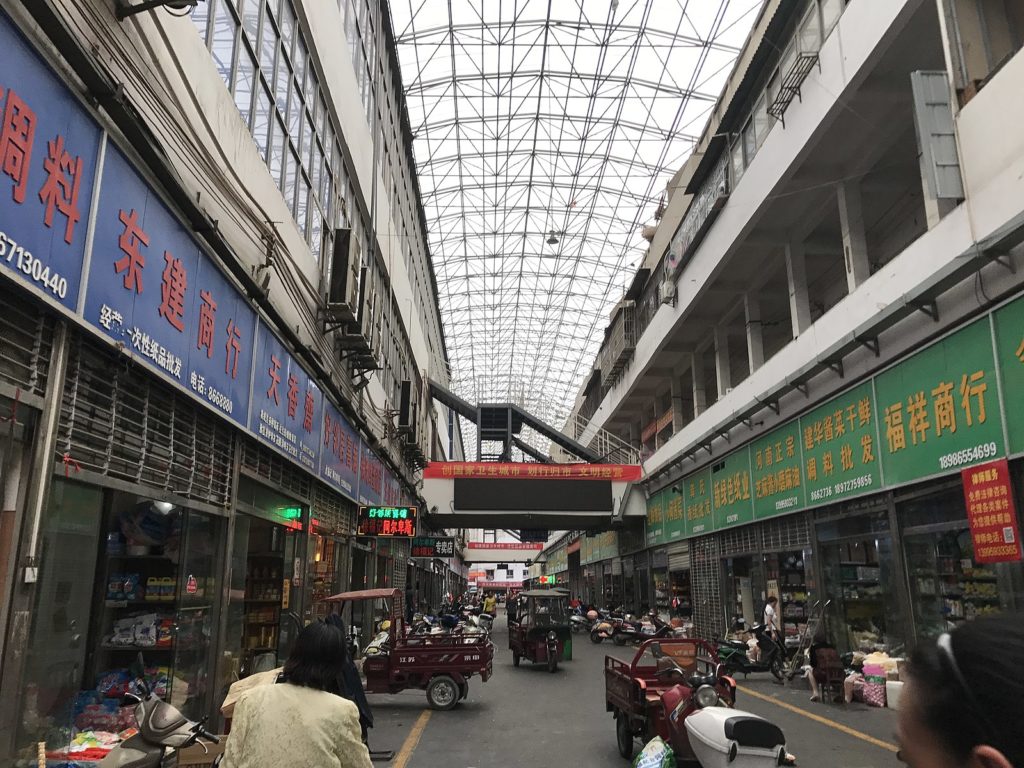
Even though mutual aid groups cannot resolve the structural inequities in resource distribution, they have eased urban-rural disparities through mobilizing donations on the Internet. One example is the messaging platform, Hubei Medical Resource Supply-Demand Platform, launched on 25 January. This platform was first established by a group of volunteers, that quickly grew into a network of more than 1,000 people. Within four days, the platform had not only upgraded their platform three times, but had also gathered information about the needs of 308 hospitals in Hubei Province. On 28 January, volunteers launched the 3.0 version of their platform, which included information about the needs of hospitals at the outskirts of Wuhan, and also added the option of being able to search for and then donate various medical resources to those different institutions. Volunteers have also been trying to gather information about other provinces that are in need of medical resources, to fill in the gaps about what is happening in often neglected places.
The pandemic has cast into greater relief the class divides created by society’s unequal resource distribution. According to the research findings of the mutual aid groups Masked Shenzhen, Masked Beijing, Masked Shanghai, and Masked Guangzhou, although sanitation workers were on the frontlines of the virus response, and were constantly exposed to dangerous waste materials, the majority of them found it difficult to buy face masks and other personal protective equipment. In the face of this predicament, many mutual aid groups initiated campaigns to donate medical supplies, which garnered widespread interest and support on the internet. Not only do these research findings demonstrate the difficulties faced by sanitation workers under the particular conditions of the pandemic, they also highlight the long-standing problems of overwork and lack of workplace protections that these workers face. The particular tasks resulting from the pandemic, as well as the reduction in manpower due to restrictions on migrant laborers’ movement, may have further exacerbated the burdens faced by these workers.
It was not only low-wage workers whose labor rights are being eroded as a result of the pandemic. In order to prevent large numbers of migrant workers from traveling between their hometowns and cities of employment after Chinese New Year, which would inevitably result in the large-scale spreading of the virus, a mutual aid group called Delay the Resumption of Work under the Pandemic was started on 25 January. Through Wechat, Weibo, Douban, and other media platforms, members successfully mobilized thousands of netizens across the country to demand that the State Council extend vacation leave to reduce the spread of COVID-19. Two weeks later, the State Council and various state entities announced that the resumption of work and school would be delayed, in response to this demand.
In reality, the endemic, uneven distribution of resources between different regions, is an issue that would be difficult to resolve quickly even in the face of the outbreak.
Other people who were neglected by the system include disabled people, pregnant women, people living with HIV/AIDS, and elderly people living alone. After Hubei Province locked down its cities and villages, medical staff at the local Chinese Center for Disease Control and Prevention were redirected to work on the emergency response to COVID-19. This resulted in many people living with HIV/AIDS being unable to access their medication. For those living with HIV/AIDS, even a temporary interruption in medication can result in serious consequences—it can lead to a worsening of their condition, drug resistance, and even death. Under these circumstances, LGBTQ+ organizations and AIDS support groups in Wuhan mobilized immediately to create volunteer support groups to deliver essential medication to people. Those with HIV/AIDS in the same city sent medication to one another by courier, in order to alleviate the anxiety of those whose medicine supply had been cut off. Other similar mutual aid groups also emerged, including the Support Group for People with Hearing Difficulties and the NCP Support Group.
There is another group of people whose needs have been neglected during this pandemic due to structural oppression: women medical workers. Even though there were many news reports about women medical workers during the pandemic, the women in these articles were primarily portrayed as mothers, girlfriends, and wives making immense sacrifices. These mainstream media narratives catered their reportage to the male gaze and ignored women medical workers’ real material needs. The rumor that many women medics had their heads shaved so that they could take up their work without distraction further contributed to the patriarchal narrative of national strength and pride, which has always been reliant on women’s labor and often come at the cost of women workers’ rights.
Under these conditions, mutual aid groups provided women workers with the dignity and material support they needed. Soon after the formation of the Sisters Against the Virus Support Group on 7 February on Weibo, the team was able to recruit many volunteers. By 15 February, the group had managed to deliver 85 boxes, or 6,120 sanitary pads, to medical workers on the frontlines. As of 10pm on 25 February, the Group had donated 421,389 pairs of period briefs, 303,939 pairs of disposable underwear, 77,592 sanitary pads, 700 tubes of hand cream, to 109 hospitals and medical teams, which together comprised more than 64,000 people.
The failures of state corporatism
While grassroots mutual aid groups worked on providing material support to local communities during the pandemic, official state bodies continued to concentrate the power of resource distribution in their own hands. On 26 January, the Ministry of Civil Affairs issued its 476th announcement, stating that assorted charitable donations to support Wuhan’s virus prevention work would be distributed to the Hubei branch of the Red Cross, the Hubei Charity Federation, the Hubei Youth Development Foundation, the Wuhan Charity Federation, and the Wuhan branch of the Red Cross.
Legal scholar Ge Yunsong argued that this policy would not only fail to rectify issues regarding resource scarcity, but would also undermine civil society initiatives, thus further impinging upon virus prevention efforts. Subsequent events proved that official charitable organizations, with the Wuhan branch of the Red Cross being the prime example, did not have the ability to distribute resources in a timely and efficient manner. They also lacked the capacity and credibility to satisfactorily respond to people’s questioning. And yet it was the Wuhan Red Cross, with the backing of the Ministry of Civil Affairs, that was given the monopoly over donated resources.
This is exemplary of corporatism as a logic of governing. Borrowing from Philosophia’s perspective in their article “A structural reflection on the pandemic: Rumors, bureaucracy, and nationalism”: “As a result of the sensitive climate, it is natural for the state to attempt to enforce control over civil society organizations. By embedding the Party’s and the government’s authority within the Red Cross and integrating itself within the organization, the state can transform the Red Cross into a part of its administrative apparatus.”
Subsequently, the space for participation in the public sphere has become increasingly curtailed. Groups originally working at the grassroots level have become confined to particular forms of participation, with some becoming appendages to the larger governing apparatus. Top-down governing logics have torn apart these groups’ close connections to particular locales and communities—not to mention their flexibility and ability to engage in rapid response. Furthermore, the lack of any regulation makes this space a breeding ground for corrupt dealings.
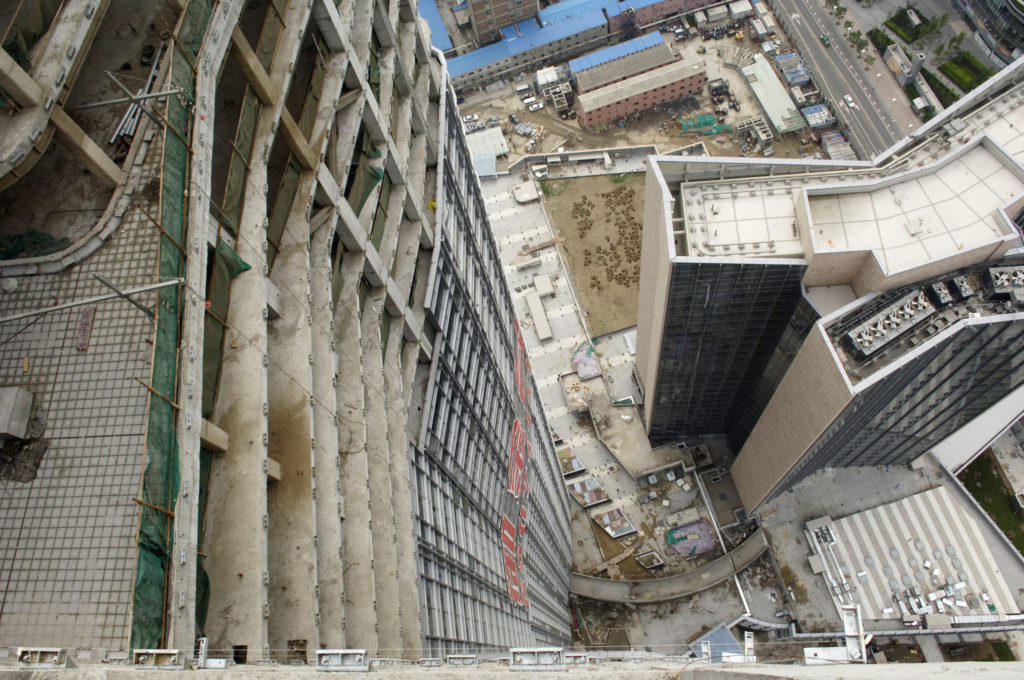
Situated within similar logics are traditional mass organizations of self-government at the grassroots level, such as Urban Residents’ Committees and Villagers’ Committees. The involvement of these traditional mass organizations was essential to the virus response, as noted by infectious diseases expert Jiang Rongmeng in an interview with Southern Weekly: “What is unique about the work of virus prevention is that it is a collective effort. It does not simply depend on the professionals, but the participation of everyone.” These groups took up many responsibilities in the name of virus prevention. At the same time, their virus response activities have also unmasked many endemic problems.
First, in the face of the pandemic, traditional mass organizations were shown to be ill-equipped and understaffed. In a mid-sized neighborhood, leading cadres were forced to personally move corpses while mounting pressure on grassroots organizations continued to build. From the middle of January, the Party Secretary of a local Residents’ Committee, alongside 13 social workers and 9 security guards, began to undertake 24 hour shifts to support the needs of 2,000 households, or 5,000 people. Every day, the social workers took calls from many concerned residents who requested ambulances and companions with whom to go to the hospital—some even requested help with transporting corpses away from their homes. Traditional mass organizations were faced with unprecedented challenges to their capacities for coordination and emergency response. One of the most tragic stories resulting from organizational failure was that of a 17 year old disabled teenager who was found dead, after his father went into quarantine for 6 days.
Second, traditional forms of community organization were revealed to have little agency in their operations. According to interviews conducted before the lockdown of Wuhan on 23 January, community workers’ only job was to tell residents that the virus was not serious, in accordance with the government’s pronouncement: “Do not believe in rumors, do not spread rumors”. After the lockdown, however, official instructions changed. Community workers were told to inform residents as to the severity of the infectious virus, and to ask them to wash their hands frequently and to wear masks. Meanwhile, these workers were also tasked with community disinfection and managing the lockdown. In this context, residents of neighborhoods became objects of governance.
The rumor that many women medics had their heads shaved so that they could take up their work without distraction further contributed to the patriarchal narrative of national strength and pride, which has always been reliant on women’s labor and which has often come at the cost of women workers’ rights.
In an interview in The Beijing Times, academic Wen Tiejun said that there should be a healthcare reform movement promoting public participation in disease prevention activities. This would allow medical resources to be distributed more equally across society upon the easing of the pandemic. But so far, the far-reaching nature of community healthcare work has not inspired residents to initiate their own projects. Meanwhile, traditional mass organizations have increasingly extended the arm of the state apparatus into the grassroots, turning themselves into capillaries of the bureaucracy.
Perhaps what is even more worrying is that local governments have been extending the grid-style social management system. Mutual aid groups do not have significant amounts of power and so remain neglected by most people. At the same time, there has been a proliferation of subdistrict Neighborhood Committees and rural Village Committees. Cities extending this form of social management have split their neighborhoods into grids. Each grid manages the workspaces and the comings-and-goings of tens, and in some cases, hundreds of households, through daily surveillance. People have to show their IDs and obtain temporary permits just to enter or exit their neighborhoods. This is a worrying development, as the state moves to exert further control over civil society and embed itself even deeper into individuals’ lives.
At the same time, we have seen how the meaning of the term “mutual aid” can be distorted to become a tool that enforces social alienation and violates individual rights, if it is not rooted in a communal ethics. Some communities have been extremely efficient and effective in preventing the spread of the virus. But the exclusion of outsiders that lay at the heart of some of their campaigns have betrayed the original impetus of community care that underlies the concept of mutual aid, and also prevented the emergence of spaces of public participation and collective mobilization.
In many neighborhoods, traditional mass organizations blocked their roads and designed barriers to prevent people outside from entering, and people inside from exiting. Some even leaked private information about the identities of those who had previously travelled to Wuhan and restricted their movements. Certain Local Village Committees announced a lockdown of their neighborhoods, prohibiting migrant workers from Beijing from entering and trapping people outside of their own communities. Subsequently, many “Beijing drifters” who had been pressured by their companies to leave the capital, were forced into a situation where they had no home to return to. Being an outsider became synonymous with being “unclean.” Outsiders were portrayed as virus carriers who would infect the closed community and destabilize law and order.
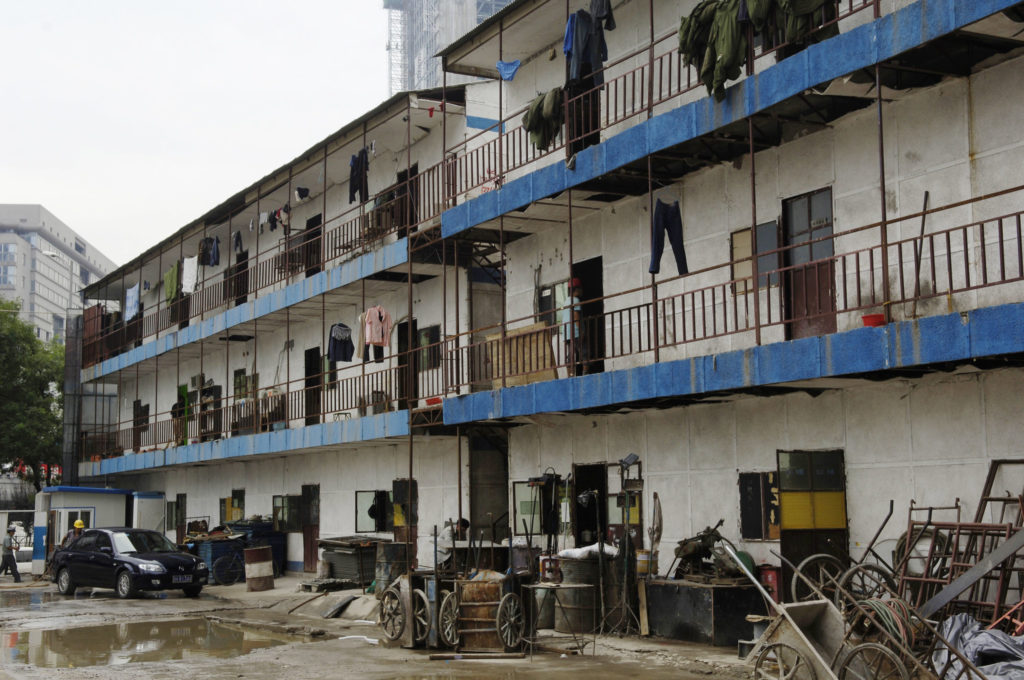
These problems do not arise as a result of the mobilization of “mutual aid” groups, but as a result of a lack of truly inclusive forms of collective decision-making. Outsiders who lack resident status have never had the right to participate in local community affairs. Even for local residents, it is difficult to say whether there can be any effective collective decision-making when there are no spaces for public discussion and debate. And it is precisely because of a historical lack of a democratic, mutual aid tradition, and the lack of practical training in the workings of public participation, that both outsiders and insiders within the system can have the rug pulled from under them in situations of rapid social change.
We witnessed incredulously as some of the medical staff who worked at the frontlines of the pandemic were prohibited from entering their homes after a vote by the residents mobilized by the property management. Throughout the entire process, no one expressed any dissenting views, and the medical workers themselves were given no opportunity to make their voices heard. This is not democracy: democracy is not simply about votes and the tyranny of the majority. This is a rhetorical manipulation of the term “democracy” to achieve exclusionist aims.
Under the governing framework of state corporatism, the question of how to organize and manage society remains a crucial one.
The difficulties of mutual aid
While we are grateful for the emergence of mutual aid groups during the pandemic, we have also tried to avoid over-idealizing the phenomenon. The long-term suppression of civil society means that many of these mutual aid groups lack organizing experience. Many of these campaigns are facing significant obstacles from within and without.
Author Feng Xiyi drew on the example of a failed online donation campaign to elucidate the issues faced by some mutual aid groups in crowdsourcing donations. First, social support networks are diffuse and volunteers may lack planning and coordination skills. Second, volunteers must choose from products in a fluctuating market (including products promoted by con artists), which means that certain donated goods may not meet the standards required by hospitals. Third, volunteers who do not understand the practical needs of hospitals may donate large amounts of superfluous materials, creating a burden upon medical workers to sort through resources.
These issues undoubtedly reflect the situation of many mutual aid donation campaigns. But perhaps we should go a step further and ask: what has resulted in many of these mutual aid groups’ lack of coordination with one another, which culminates in a lack of overall planning? What causes mutual aid groups to emerge and to want to provide hospitals with appropriate resources, without proper experience or knowledge of what materials are needed? What is the cause of miscommunications between volunteers and hospitals? We came to the conclusion that we cannot discuss the failures of these mutual aid groups without addressing structural issues in Chinese society: the historical dearth of mutual aid initiatives and the lack of information and transparency.
Top-down governing logics have torn apart these groups’ close connections to particular locales and communities—not to mention their flexibility and ability to engage in rapid response.
Another author and organizer, who had participated in a donation campaign with a group of classmates, came to a vastly different conclusion: in their view, mutual aid groups are simply not appropriate for long-term coordination and management projects. “The most serious issue is that of trust: we need to know whether the sources of materials are credible, whether people’s requests are legitimate, and whether the details of the project are accurate. This means that a significant amount of time and energy is spent on verifying a seemingly simple action.” And it is for the same reason that, in their view, “the state is the ultimate dependable third party for central dispatch and coordination.”
The author further argues that the progressive development of mutual aid networks and the increase in the number of such groups will exhibit the same shortcomings if they gradually assume the shape and function of government structures. This is because the internal workings of these groups remain “rooted in a communication style that is dependent on cerebral analysis and linear collective discussion,” which is “backwards.” This article tries to make the case that a mass centralized mechanism (i.e. technocratic government and big-tech companies), with its technical capabilities (such as the ability to read big data), is undeniably more modern and advanced than a decentralized mutual aid group. But are the people simply unable to harness the power of big data, or are they not yet able to break the stranglehold of existing structures under big-data monopoly? (We will specifically respond to this concern in Part Three).
This technological elitist attitude forms an interesting foil to Leung Man-to’s argument, which borrowed the ideas of the French philosopher Condorcet to propose that as long as individuals in a community are not influenced by biased opinions, and can engage in independent judgement, their collective decisions will further the good of the many. Leung also raised the example of the hive mind in Kevin Kelly’s book Out of Control: although bees do not have high levels of brainpower, through joint mobilization, they are able to quickly and effectively engage in forms of collective action. From Leung’s perspective, the emergence of energetic mutual aid groups in Wuhan during the pandemic arguably follows a similar pattern of mutual coordination and cooperation: “This is a kind of collective, communal arrangement through openly accessible social media platforms. The Internet makes it possible for people to use their skills to help those in need, while simultaneously finding new modes of communicating and coordinating with one another.”
Leung’s commentary is not only directed at the emergence of mutual aid groups during the pandemic, but also articulates a vision for a future society. But we cannot help but be disappointed when we compare this with our current predicament. At the end of January, the Ministry of Civil Affairs announced that all donations of supplies must go through the Red Cross, and that the government would subsequently take up the management and distribution of these donations. With this, many donation campaigns were cut short.
Overall, it looks like the actions taken by these mutual aid groups were a form of emergency first-aid—a spontaneous movement arising from a moment of exception, in which society’s previously tightly-controlled mechanisms of resource distribution lost their effectiveness, and the people had to step in to fill the temporary void. This is similar to when the human body experiences an arterial rupture: mutual aid groups, in this analogy, are the blood clots. In our daily life, our organs “demean” blood clots as useless elements of the human body; they are necessary for the resumption of bodily equilibrium only during a situation of emergency. Blood clots remain blood clots. They will never be a complete substitute.
Continue to Part 2 of the series.
